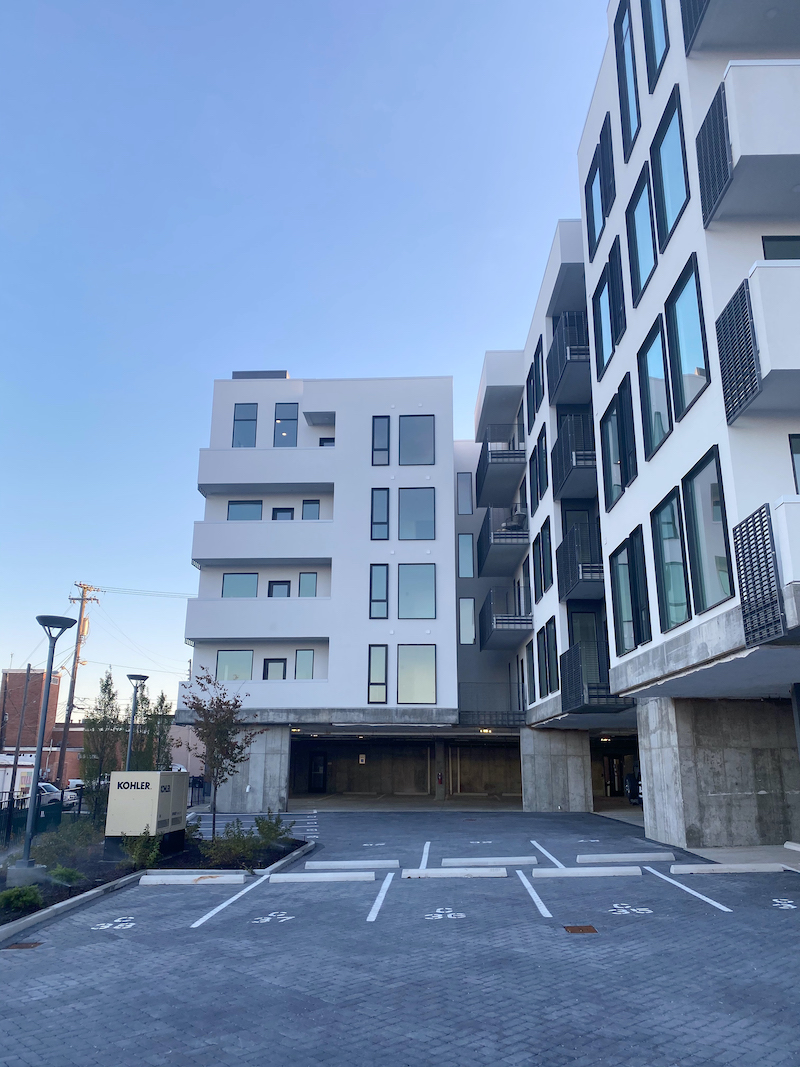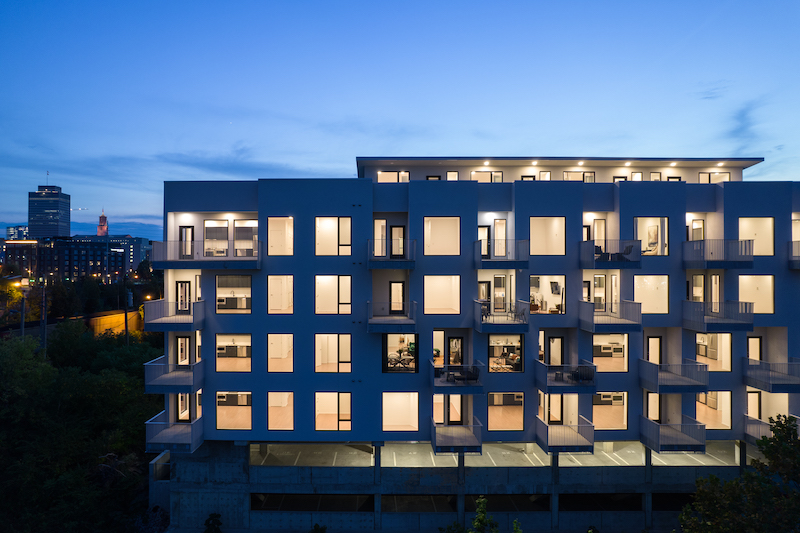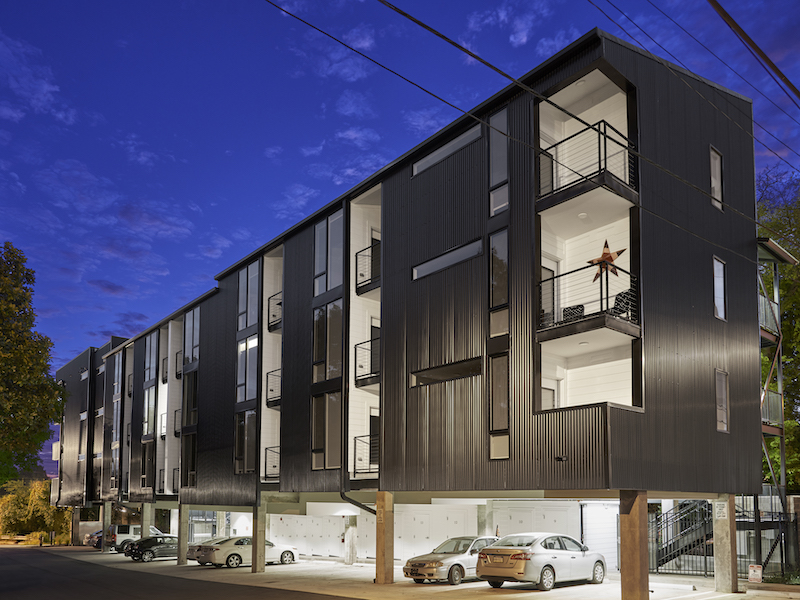In designing and building apartment and condominium projects, parking determines everything from site suitability to the building’s footprint to revenue optimization.
Throughout my career, I’ve had to turn down sites from a development perspective because we couldn’t make the parking work. Parking often dictates building layouts and sometimes even the number of units we can put into the building. For those of us in the multifamily sector, we want to create spaces for people to live, play, and grow, not just projects centered around giving people a place to store their cars.
Over the years, my colleagues and I at The Bradley Projects have developed strategies for site evaluation and alternative methods for maximizing parking and overall return on investment. The following are strategies for parking that we have found serve the site, the residents, and the owner/developer.
KNOWLEDGE AND THOROUGHNESS: STILL THE KEY FACTORS IN SITE ASSESSMENTS
First, there is no “thinking around” a site’s topography related to parking design strategies. As developers ourselves, we occasionally have to pass on a site solely because it doesn’t allow for optimal parking.
Take the matter of subterranean conditions, which can vary significantly across the U.S. In coastal areas, underground parking becomes difficult due to soil conditions and drainage, whereas in Nashville, where we are based, everything is on bedrock. That makes excavation time-consuming and expensive and carries certain liabilities due to the need for explosives to blast the rock. So it is important to identify the unique site-specific conditions before moving on to the rest of the site analysis.
STARTING POINTS FOR EVALUATING PARKING
We typically begin by looking at the geometries of the site, any irregularities, possible ingress and egress points, traffic flow and patterns, and assorted other unique features—all of which is part of our contextual analysis. We study layouts, which are a factor of dimensions, rhythms, and building codes.
Over the years, we have assembled a knowledge base of parking analyses from every project we’ve ever done, based on our work with numerous traffic engineers and parking consultants. Using this knowledge base we can be very efficient in evaluating a site. Specialized software technology can sometimes be helpful, but we often still rely on conventional evaluation methods due to cost and budget to get the job done.
We’ve also found that technology doesn’t quite go that last step to optimize the layout. We have been experimenting with software from several new tech companies, beta testing their products that promise to use in-depth algorithms to essentially compute the most efficient layout from the onset of the study.
We have found that, while these tools can produce results very quickly, the results have been much the same as what we would have developed without the program. We’ve also found the algorithm-based software can lay out the spaces mathematically but has not yet been able to finesse the geometries the way the human brain can. There are just times where a motorcycle space or two can fill in a strange area, or you can move trash collection somewhere else, or a transformer to another location—all solutions that surface through human collaboration, brainstorming, and experience.
THREE APPROACHES TO PARKING IN APARTMENT AND CONDOMINIUM PROJECTS
Once we have completed an initial analysis, we’re ready to consider what building typology makes sense. Usually, that falls into three categories: tuck under, cantilever, and over excavation.
Tuck under is usually the least expensive method for tight areas but only works well off alley-loaded sites. For our Fairfax Flats project, we managed to fit parking for 19 units into a tiny urban infill lot with this tactic.

In neighborhood-based urban areas with alley-loaded access, the tuck under approach can work well if the site allows the structure to address the main street and neighborhood while hiding and directing the cars to the alley.
Cantilever. In multifamily projects, cantilevers can break up the typical “box” multifamily development that is running rampant in so many cities and give architects a chance for a more progressive statement. They also provide an ideal way to work covered parking into the project. While more expensive than a tuck under, the cantilever approach can provide more parking spaces.

A site with an alley is still preferable for the cantilever technique, although, in tight spatial scenarios, we’ve done this off of a busy city street.
Over excavation is usually the most expensive option. In many urban areas this approach allows parking to be pushed to the extreme edges of the property, then covered by the building or by setback/outdoor space, depending on the zoning requirements.

Over excavation is expensive due to the excavation costs, shoring requirements at property lines, and the extra effort needed to build space underground. This approach lends itself to creating plaza-like spaces over the concrete “lid” of the parking area.
Some more enlightened cities have begun to incentivize developers to create this type of ground-level outdoor space to integrate new multifamily communities into the urban fabric and pedestrian realm. Such spaces also can increase retail or residential rents if they are seen as marketable. But it’s still a question of thoughtful and intentional design.
Over excavation can work just about anywhere there is enough room to get a car ramp down and parking allocated.
CHOOSING THE RIGHT PARKING STYLE
Ultimately, the cost-effectiveness equation is more complex than dollars in and dollars out. So many of our projects would never have penciled out without pushing hard on efficiencies and getting creative with how we solve for the highest level of efficiency while addressing all of the various types of users and circulation patterns.
Sometimes the cheapest option isn’t the best. I’ve seen the ROI on a multifamily development increase 20-25% just by rethinking how we handle the parking scenario. It was not because the parking solution saved construction dollars, but because it allowed 20-25% more units, or more retail space, or both.
It’s becoming much more critical to think about and be honest about how much parking your project needs. Cities across the map are lowering their parking requirements. People are becoming less car reliant. In the Nashville region, we are seeing an average 25% decrease in required parking in most areas of our urban areas—even down to zero required parking in areas on multimodal corridors. Nashville’s civic leadership is very wisely and progressively pushing much of the parking requirements back on developers and the market to resolve the parking situation instead of adopting an antiquated, one-size-fits-all policy.
THE FUTURE OF PARKING
Despite the reduced reliance on cars, we’re nowhere near a zero parking world, but the trend is undoubtedly moving toward less and less parking, more EV charging areas, and more drop-off/valet areas.
I’m excited to see the possibility of our cities becoming more populated with autonomous vehicles that can be developed for much safer conditions for riders and pedestrians.
ABOUT THE AUTHOR
Jared Bradley, AIA, NCARB, is Founder and President of The Bradley Projects, an architecture, construction, and development company headquartered in Nashville, Tenn.
Related Stories
| Oct 13, 2010
Apartment complex will offer affordable green housing
Urban Housing Communities, KTGY Group, and the City of Big Bear Lake (Calif.) Improvement Agency are collaborating on The Crossings at Big Bear Lake, the first apartment complex in the city to offer residents affordable, eco-friendly homes. KTGY designed 28 two-bedroom, two-story townhomes and 14 three-bedroom, single-story flats, averaging 1,100 sf each.
| Oct 13, 2010
Residences bring students, faculty together in the Middle East
A new residence complex is in design for United Arab Emirates University in Al Ain, UAE, near Abu Dhabi. Plans for the 120-acre mixed-use development include 710 clustered townhomes and apartments for students and faculty and common areas for community activities.
| Oct 13, 2010
Community center under way in NYC seeks LEED Platinum
A curving, 550-foot-long glass arcade dubbed the “Wall of Light” is the standout architectural and sustainable feature of the Battery Park City Community Center, a 60,000-sf complex located in a two-tower residential Lower Manhattan complex. Hanrahan Meyers Architects designed the glass arcade to act as a passive energy system, bringing natural light into all interior spaces.
| Oct 12, 2010
The Watch Factory, Waltham, Mass.
27th Annual Reconstruction Awards — Gold Award. When the Boston Watch Company opened its factory in 1854 on the banks of the Charles River in Waltham, Mass., the area was far enough away from the dust, dirt, and grime of Boston to safely assemble delicate watch parts.
| Sep 13, 2010
Richmond living/learning complex targets LEED Silver
The 162,000-sf living/learning complex includes a residence hall with 122 units for 459 students with a study center on the ground level and communal and study spaces on each of the residential levels. The project is targeting LEED Silver.
| Sep 13, 2010
Committed to the Core
How a forward-looking city government, a growth-minded university, a developer with vision, and a determined Building Team are breathing life into downtown Phoenix.
| Aug 11, 2010
Brown Craig Turner opens senior living studio
Baltimore-based architecture and design firm Brown Craig Turner has significantly expanded its housing design capabilities and expertise with the launch of its new senior living studio.
| Aug 11, 2010
CTBUH changes height criteria; Burj Dubai height increases, others decrease
The Council on Tall Buildings and Urban Habitat (CTBUH)—the international body that arbitrates on tall building height and determines the title of “The World’s Tallest Building”—has announced a change to its height criteria, as a reflection of recent developments with several super-tall buildings.
| Aug 11, 2010
Morphosis builds 'floating' house for Brad Pitt's Make It Right New Orleans foundation
Morphosis Architects, under the direction of renowned architect and UCLA professor Thom Mayne, has completed the first floating house permitted in the U.S. for Brad Pitt’s Make It Right Foundation in New Orleans.The FLOAT House is a new model for flood-safe, affordable, and sustainable housing that is designed to float securely with rising water levels.













